
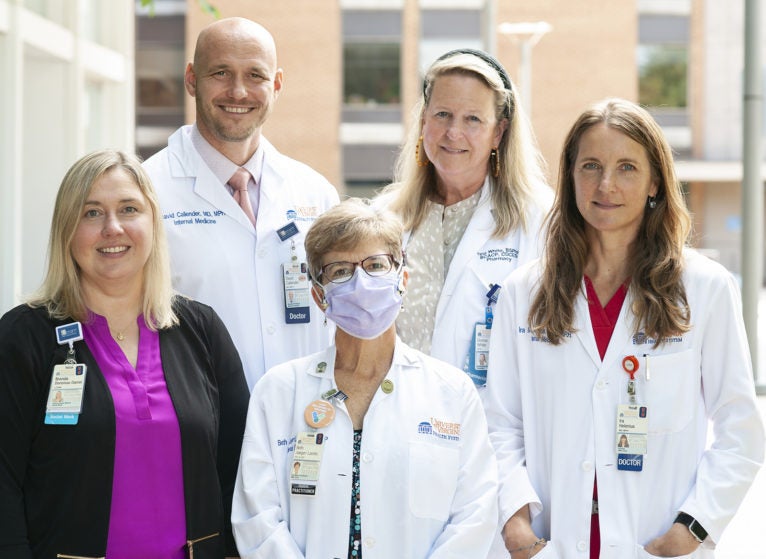
(l-r) UMA team members Brenda Doremus-Daniel, Clinical Social Worker; David Callender, MD, MPH; Beth Jaeger-Landis, RN, ACNP; Donna White, Pharmacist; and Ira Helenius, MD, MPH
Outstanding Patient Satisfaction Feedback: Let’s Give the UMA Clinic a Round of Applause!
Take a moment from your busy day and look at the incredible feedback our colleagues in the University Medical Associates (UMA) clinic received from a recent Clinician and Group Consumer Assessment of Healthcare Providers and Systems (CG-CAHPS) survey.
For FY21, in the “Communication With Your Provider” domain, UMA achieved:
| “Provider spent enough time with me” | top decile scores in 5 months; scored 100% in April, May, and June |
| “Provider gave easy to understand instruction” | top decile scores in 7 months |
| “Provider explained things in a way easy to understand” | top decile scores in 8 months |
| “Provider listened carefully to me” | top decile scores in 6 months |
| “Provider showed respect for what I had to say” | top decile scores in 5 months |
| “Provider knew important information regarding my medical history” | top decile scores in 8 months |
| Composite score of the above | top decile scores in 5 months |
Add to that impressive list this important feedback:
| “I would recommend this practice to others.” | UMA achieved top decile marks for 8 months and 100% for month of May. |
UMA is a big clinic. 12,000+ patients. 100+ physicians. 30+ new residents every summer. Medical, nursing, and pharmacy students coming through all year long. Additionally, it suffers from the nationwide, nurse-staffing challenges — at one point experiencing a 40% vacancy rate. And then, of course, there’s the pandemic.
Yet, amid all of this, UMA is shining bright. A model of resiliency and how it can be done.
To explain how these scores were achieved, Connect sat down with UMA team members David Callender, MD, Medical Director, Assistant Professor of Medicine; Jennifer Joseph, PFA Supervisor; Laura Martin, MD, Internal Medicine Resident; Laquita Pinchback, Ambulatory Director, Primary Care and Psychiatry; Shari Stanley, RN, Clinic Manager; and Brian Uthlaut, MD, Program Director, Internal Medicine Residency Program, Associate Professor of Medicine.
Communication Is Key
It’s important to note that these positive scores are not single-feedback outliers, but rather a steady trajectory of improvement for the UMA clinic. The team attributes part of its success to communication.
UMA is a resident teaching clinic and, as such, there are natural barriers to good communication and to patients feeling welcome.
“We’re overcoming challenges on the front end,” says Uthlaut, “by having an increasingly welcoming culture that's patient-focused and, on the back end, by physicians showing a deeper ownership of patients who are not primarily ‘their patients.’”
Uthlaut has served in the UMA clinic for 11 years as a faculty member and three as a resident. He says that, as a resident teaching clinic, patients do not always see their primary doctors because residents have rotations that are divided across Grounds. This should be a natural barrier for communication challenges; but not at UMA.
“Our patients only see their primary physicians 60-70% of the time,” he says. “I’m blown away by our residents who often are providing important care for patients they don’t know — the preparation and depth of care they're providing for their colleagues’ patients is significant. This degree of ownership is beyond anything that I've previously seen.”
Callender adds that UMA team members like to be great communicators. “Despite having 100 or more clinicians here,” he says, “everyone knows each other. When a resident sees a patient who is not theirs, the mentality is, ‘Yes, I will let your doctor know.’” This simple phrase provides reassurance to the patient that they’re being cared for.
Martin, a third-year resident agrees, saying, “Communication is something that's ingrained in our training, to take ownership of our patients. As a resident, we know our colleagues well and we communicate with our patients that we will keep their primary care doctor updated.”
Outside of the exam room, Stanley works with her own staff, the clinical staff, the access team, and the PFA supervisor to maintain open lines of communication.
“I work with Jennifer Joseph,” she says, “on how best to keep our staff aligned. I have a strong working relationship with her and with our two medical directors, Ira Helenius and David Callender. Being present in meetings and listening to everyone’s perspective really helps.
“The access staff has an appreciation for what the clinical staff does and vice versa because we educate them on everybody's role. It makes the job easier when you have that understanding and when everybody is willing to help each other. I know that sounds idealistic, but it can happen.”
Stanley maintains two large bulletin boards, referred to as the UMA Wall of Fame.
“Because everybody's wearing masks and there are many new employees, I make sure that all of the residents and clinical staff have their pictures posted. It's a lot of people, but it’s important that we see our colleagues’ faces.”
Callender praises Stanley for her positivity, saying, “She’s the one who has set the conditions at UMA for the patients to have a good experience.”
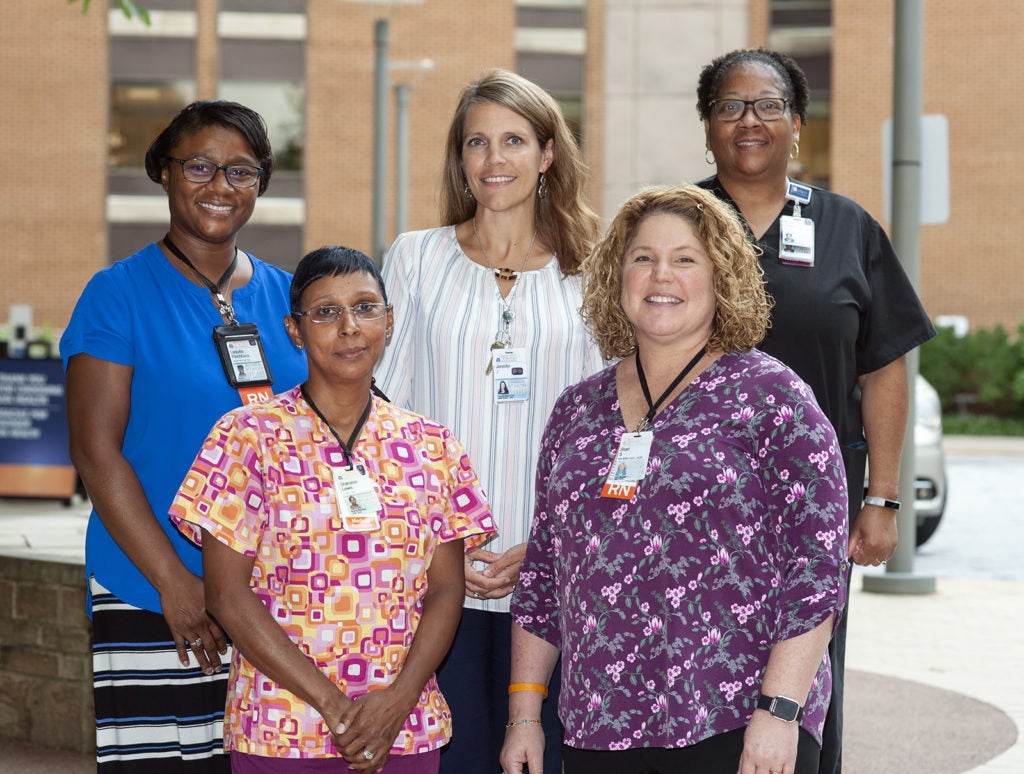
“It’s the people.”
Pinchback is responsible for 10 of UVA Health’s primary care clinics, of which UMA is the largest. She says that the high scores and positive feedback speak to the team’s ability.
“UMA has come a very long way,” she says. “A while ago, we were struggling. But we have built this team over many years. When we got these results, I was so excited — I just wanted to scream it from mountaintop!”
Stanley says UMA makes a conscious effort to constantly create a positive atmosphere.
“‘Know who your staff are,’” she tells her coworkers, “‘Call them by name.’ While we can't change our tasks, and it can be crazy, and COVID makes everything more stressful, we can make the atmosphere more pleasant. We're all in this together. If everyone is working well together and enjoying each other's company, ultimately, we believe the patients receive better care. And that’s what’s happening.”
Joseph says that it feels like the team — the nurses, the clinicians, the access team — has become cohesive. When the patients step off the elevator, they feel that teamwork, that atmosphere, and respond accordingly.
“It is the culture here,” she says. “On the PFA side, I tell my staff how we directly contribute to that patient satisfaction. I’ve felt a change since I started here in January. Things are different. I think it is the people who are making a difference.”
While the data sets refer directly to a patient’s experience with their physician, Callender is quick to point out that the great feedback UMA receives belongs to the entire team.
“I want to emphasize this,” he says. “The friendly faces a patient sees when they get off the elevator, that's so important. Jennifer's team is so kind and receptive to our patients. Everyone on our team is a key part of this success.”
Uthlaut takes it one step further, saying the patient’s visit starts on the ground floor, before they even get on the elevator.
“Patients are greeted at the front door of the building, primarily by Becky Ferguson and George Thompson, who are consistently kind, welcome, and inclusive. I regard them as the forward faces of our clinic. Theirs are the first faces that patients see when they come to their appointment. Their presence creates a hands-on approach to greeting the patient and facilitating their entry.”
Teams are made of people, and Joseph says that she and Stanley are always in discussions about hiring the right person.
“For my team,” she says, “five out of seven have been here less than a year and three less than 12 weeks.” This makes the above scores even more impressive, given how fresh her team is. “I think it's amazing that that we received these scores as we’re still putting in the time and building the PFA team. It all comes down to the people.”
Stanley believes that the survey reflects all the things that UMA is trying to accomplish. “The patients see and feel the atmosphere,” she says. “In the past, comments usually reflected only the care provided by a physician. But now, a lot of the feedback includes the staff. I try to share that throughout the clinic, because the comments are not just physician-focused anymore. It's encompassing the whole clinic, which is exciting. We do have fabulous physicians, don't get me wrong. They deserve a ton of credit. But, it’s nice to see patients recognizing our whole team.”
Helenius says that when she started as medical director, 10 years ago, the clinic “was in a in a completely different place.” She adds, “I’m am amazed that we have finally come this far. So much work by many amazing staff and clinicians, over a long time, has brought us here today. Passing the reigns to Dr. Callender’s capable hands is an honor.”
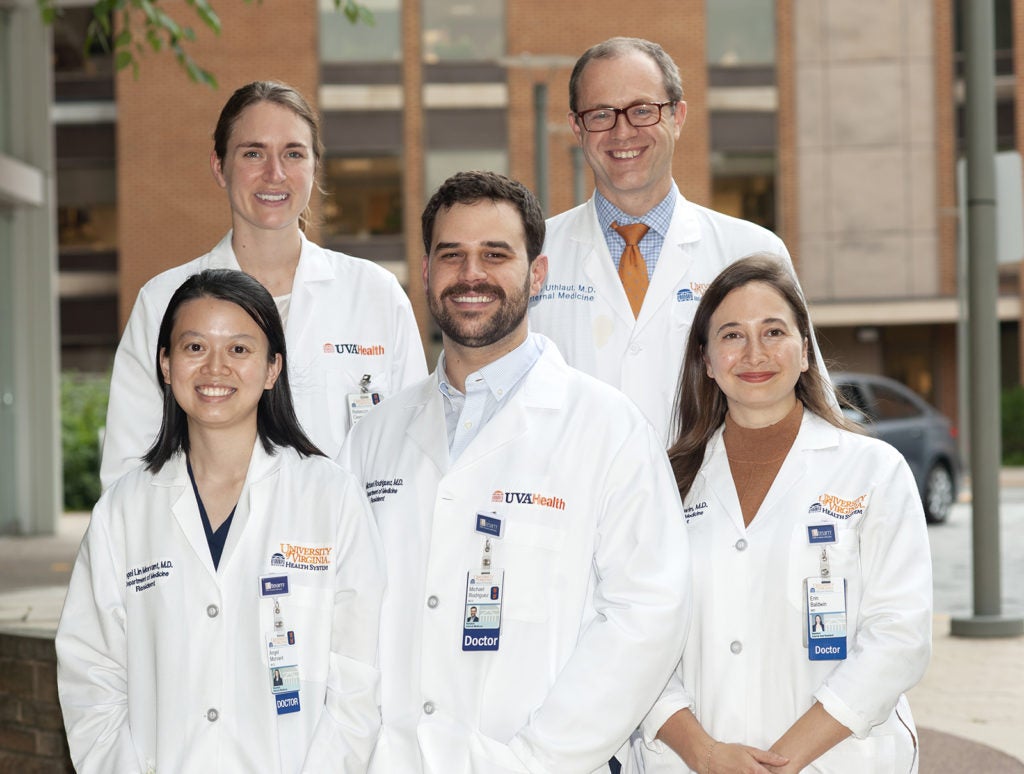
The Pandemic’s Silver Lining?
The arrival of COVID-19 created a renewed sense of teamwork and collaboration which, ultimately, has improved patient care. Uthlaut has received comments from resident physicians remarking how enjoyable it was to work at UMA, even during the pandemic.
“They notice the happiness among the staff in the clinic,” he says. “Also, many of the clinic’s processes — despite the challenges of distancing and coordinating — became more efficient since the pandemic started.”
As a resident, Martin says that since the start of the pandemic the mentorship and guidance she has received from attending physicians and the support from the staff has been great. “Nurses, administrative staff, pharmacy, social work — there's been a push to come together during the pandemic to ensure we are continuing to provide excellent care for our patients.”
Reflecting on the past year and a half, Callender says, “This is the home of our patients, the home of our residents. That continued despite the pandemic. That's something that shines with the patients, to understand that we've always been here. We were here during the pandemic, and we're still here. That may be why we're getting some really good feedback. We didn't shut down. We were always here to take care of our patients.”
Stanley says that “with all the challenges of the past year, this feedback is so exciting for us because we've been working hard to make ours an environment where people want to be — whether it’s the patients, the clinical staff, the access staff, or the physicians.”
Efficiencies and Additions to a Bustling Clinic
UMA recently added efficiencies to its processes. Nurses now take calls from patients and assist in coordinating clinical care, which frees up clinicians’ time.
Pinchback says, “While we’ve always been customer-service friendly, with RNs on the phone now, we have faster responses to patients’ questions and in a more in-depth manner.”
This has been incredibly helpful, says Uthlaut. “Patients already receive significant medical guidance or facilitation prior to me, as a physician, getting a message.”
As of July 1, 2020, UMA instituted a behavioral health integration model, which has already seen approximately 500 patients. Callender explains: “This is where a licensed clinical social worker, a psychologist, and a psychiatrist works with our patients. This gives our clinicians a quick referral mechanism to address behavioral healthcare needs. That sort of offering is something that's severely lacking in the United States, in Virginia, and at UVA. Bringing those services to primary care is incredibly helpful for our patients and for us as clinicians.”
Additionally, UMA has both a pharmacist and a pharmacy specialist who help integrate aspects of prescriptions, like payment of medications.
“I think patients really appreciate the resources we provide,” says Callender. “When patients come to our clinic, they are fully taken care of.”
Please join us in thanking our UMA colleagues for taking such good care of our patients and in congratulating them on receiving such positive feedback.
Latest News

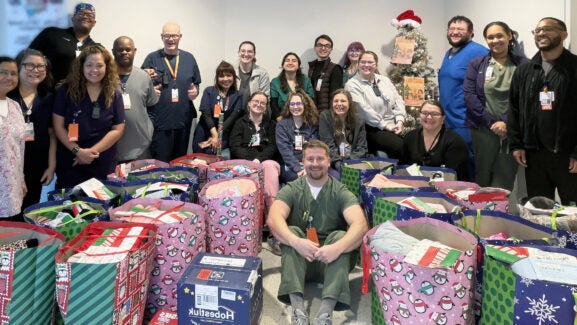
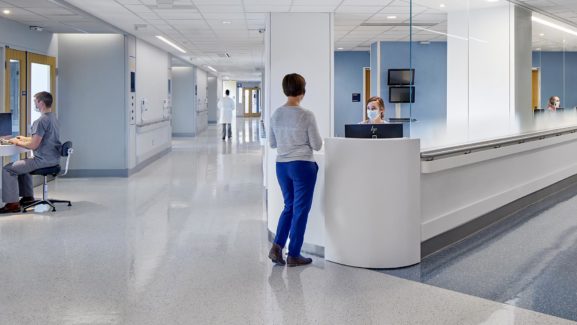
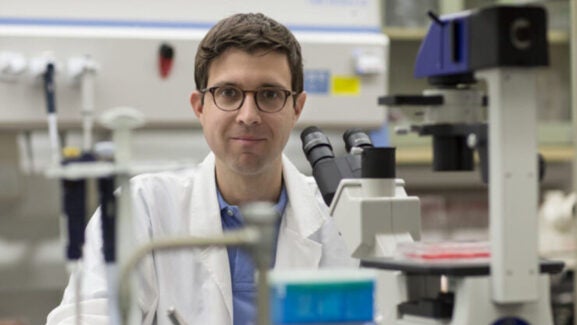
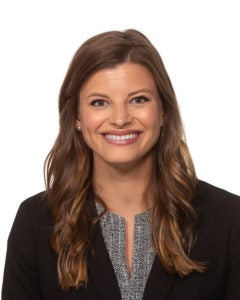
I am lucky enough to work with UMA on a project to improve our screening rates for colorectal cancer at UVA; they are FABULOUS to work with and deeply committed to doing all they can for the patient. Congrats on the recognition UMA! You deserve it.